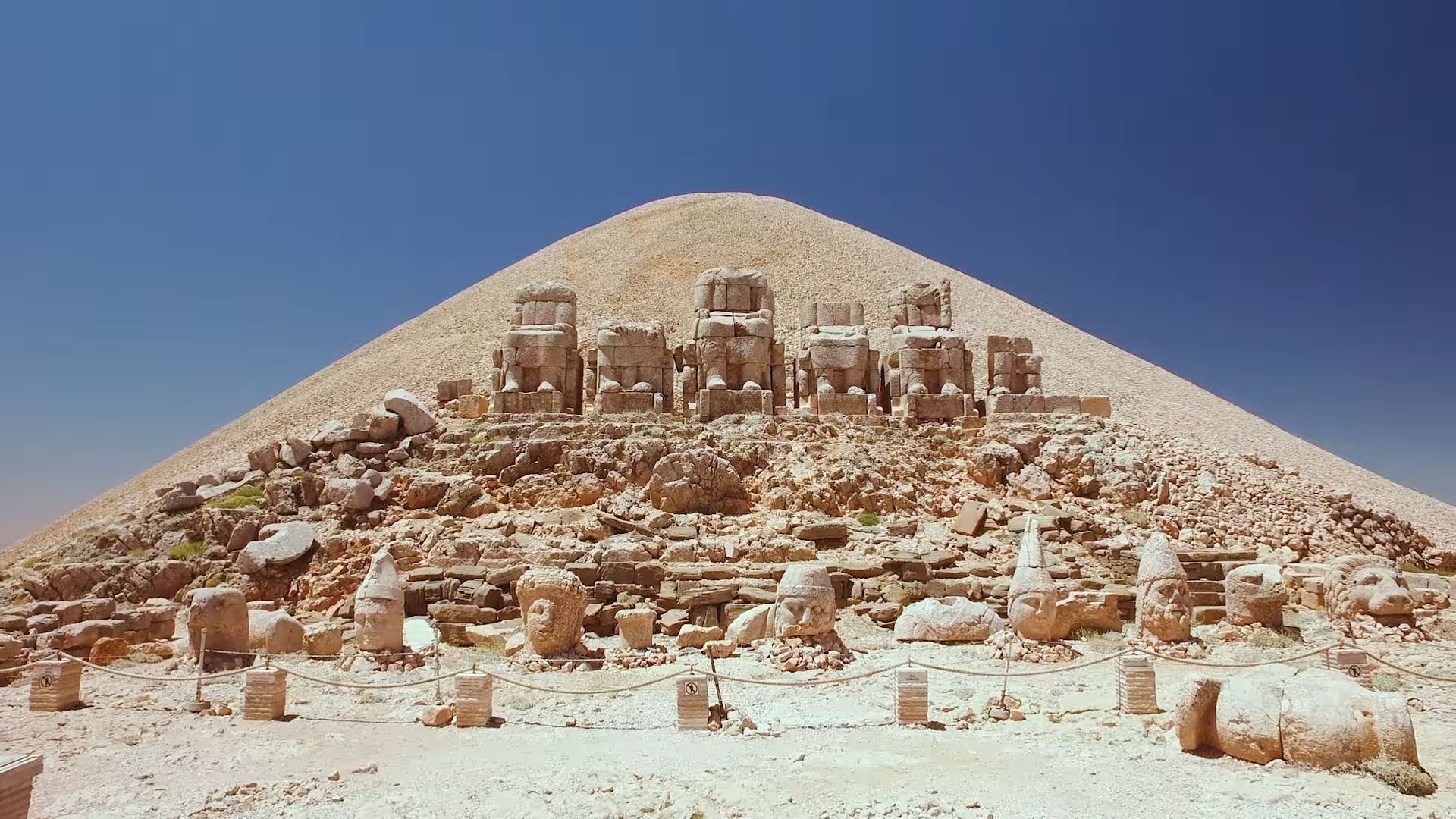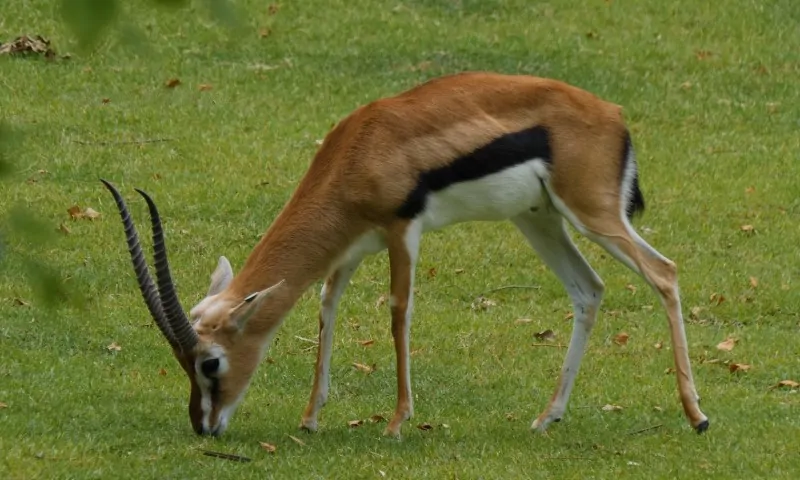Mount Nemrut is one of Turkey’s most iconic historical and cultural landmarks.
Found in the Taurus Mountains, this ancient site offers visitors a glimpse into a forgotten kingdom while treating them to breathtaking views of Eastern Turkey.
Its significance lies in its grand stone statues, remarkable history, and location, making it a must-see destination for history lovers and adventurers alike.
Let us see what you should know before making a trip.
1. The History Behind Mount Nemrut
Mount Nemrut was constructed by King Antiochus I of the Commagene Kingdom during the 1st century BC. The kingdom, located in modern-day Southeastern Turkey, was a blend of Persian and Greek cultures, and Mount Nemrut’s monuments reflect this fusion.
King Antiochus I sought to immortalize himself and the gods by constructing massive statues on the mountain.
The site features colossal stone heads of deities, including Zeus, Apollo, and Hercules, alongside a statue of King Antiochus himself, symbolizing his divine connection.
The king’s mausoleum, built within the massive stone mound, is another key feature of Mount Nemrut.
These statues, which range from 8 to 10 meters in height, stand as a testament to the grandeur of Hellenistic art and architecture. The meticulous craftsmanship of the sculptures, combined with their sheer scale, make Mount Nemrut a UNESCO World Heritage site.
The historical significance of this ancient sanctuary is not only tied to its architectural achievement but also to its role in showcasing the blend of Eastern and Western traditions that characterized the Commagene Kingdom.

2. When to Visit
Mount Nemrut can be visited year-round, but certain seasons provide a more comfortable and visually stunning experience.
- May to June: Spring offers mild temperatures and lush surroundings, making it an ideal time for hiking and sightseeing.
- September to October: Early autumn provides cooler temperatures, with fewer tourists, offering a peaceful experience.
When planning a visit, it’s important to consider these factors:
- Avoid winter: The statues are often covered in snow, making visibility poor and hiking more challenging.
- Avoid summer: The intense heat can make hiking difficult and uncomfortable, especially during midday.
The most popular times to visit are during sunrise or sunset. The lighting at these times adds a magical touch to the colossal statues, casting dramatic shadows that enhance the beauty and mystery of the site.
3. How to Get to Mount Nemrut

Reaching Mount Nemrut involves a combination of travel methods.
- Closest major city: Adiyaman, which offers domestic flights from Istanbul and Ankara.
- Karadut: A small village near Mount Nemrut offering budget accommodations and easy access to the site.
- Kahta: This larger town offers better accommodation options but is slightly farther from the mountain.
- Tours: Organized tours are available from popular tourist destinations like Cappadocia, Kahta, and Malatya.
Most visitors prefer to stay in either Karadut for convenience or Kahta for comfort. Both towns offer shuttle services and taxis to the mountain. Renting a car is also an option for more flexibility during the trip.
4. Hiking and Accessibility
Visiting Mount Nemrut involves a short but steep hike to the summit. From the parking area, visitors must walk approximately 600 meters along rocky and uneven paths.
While the hike isn’t overly strenuous, it does require good footwear and a reasonable fitness level.
The high altitude also means cooler temperatures, especially at sunrise and sunset, so warm clothing is essential even during warmer months.
Those seeking more adventure may opt to hike up from Karadut, though most visitors take advantage of taxis or shuttle services that bring them directly to the parking area.
The hike itself offers stunning panoramic views, rewarding visitors with a scenic experience before they reach the iconic stone statues at the top.
5. What to Expect at the Site
Mount Nemrut is famous for its two primary terraces: the East Terrace and the West Terrace. Both terraces offer differing levels of preservation and are oriented to capture the best lighting conditions during sunrise and sunset.
The East Terrace is ideal for watching the sunrise, with its larger, more intact statues casting long shadows as the sun begins to rise over the horizon.
The West Terrace, on the other hand, provides visitors with a better-preserved view of the heads and is perfect for sunset viewing.
Between the two terraces, a path takes visitors along the mountain, offering breathtaking views of the surrounding Taurus Mountains. The statues themselves, though weathered by time, are incredibly detailed and reflect the skill and artistry of the ancient world.
Visiting both terraces offers a complete experience, allowing visitors to witness the grandeur of King Antiochus I’s monumental tomb complex from multiple perspectives.
6. Other Attractions in the Area
Mount Nemrut is part of a region rich in historical and cultural significance.
- Severan Bridge: A Roman bridge located nearby, showcasing impressive ancient engineering.
- Arsameia Ancient City: The former capital of the Commagene Kingdom, featuring inscriptions and statues.
- Karakus Tumulus: A burial mound constructed by the Commagene kings, surrounded by large columns.
For those looking to explore further, day trips to nearby attractions such as:
- Sanliurfa: Known for its historical sites and rich cultural heritage.
- Gobekli Tepe: An ancient archaeological site, often called the world’s oldest temple, is also within reach.
Exploring these nearby landmarks adds to the depth and richness of any trip to Mount Nemrut.
7. Costs and Logistics
Visiting Mount Nemrut is relatively affordable compared to many world heritage sites.
The entry fee to the national park is around 25 TRY, making it accessible for budget travelers.
Accommodation in Karadut is reasonably priced, with several guesthouses offering budget-friendly stays.
Those interested in more comfort can find better options in Kahta, though prices may be higher.
Organized tours to Mount Nemrut typically cost around 30 euros per person, which often includes transportation and a guide.
- Water: Hydration is key, especially during the hike.
- Hiking boots: Sturdy footwear is essential for navigating the rocky paths.
- A jacket: Temperatures can drop significantly, especially at higher altitudes.
- A camera: To capture the stunning scenery and the monumental statues.
The Bottom Line
Mount Nemrut offers visitors a blend of history, culture, and natural beauty.
Its awe-inspiring statues and terraces, combined with nearby historical attractions, make it a must-visit for travelers interested in ancient civilizations and scenic hikes.
Also Read: Learn the differences between a hawk and a falcon. They aren’t all that similar.
Related Posts:
- Why Do Dogs Love to Roll in Smelly Things? 7 Things…
- How to Plan Your Mount Toubkal Trek - What to Know
- How Fast Is a Gazelle? 10 Things You Didn’t Know
- 10 Biggest Spiders In The World You Need To Know About
- Antilles Pinktoe Tarantula Care Guide – Everything…
- 10 Oldest Trees in the World You Must Know About in 2025







